Key takeaways:
- Open communication and building trust are essential for fostering collaboration and innovation within remote testing teams.
- Utilizing the right tools, such as communication and project management software, is crucial for effective remote collaboration and accountability.
- Establishing clear expectations and regular check-ins enhances team motivation, productivity, and morale.
- Recognizing and celebrating small wins boosts team cohesion and creates a positive remote work environment.
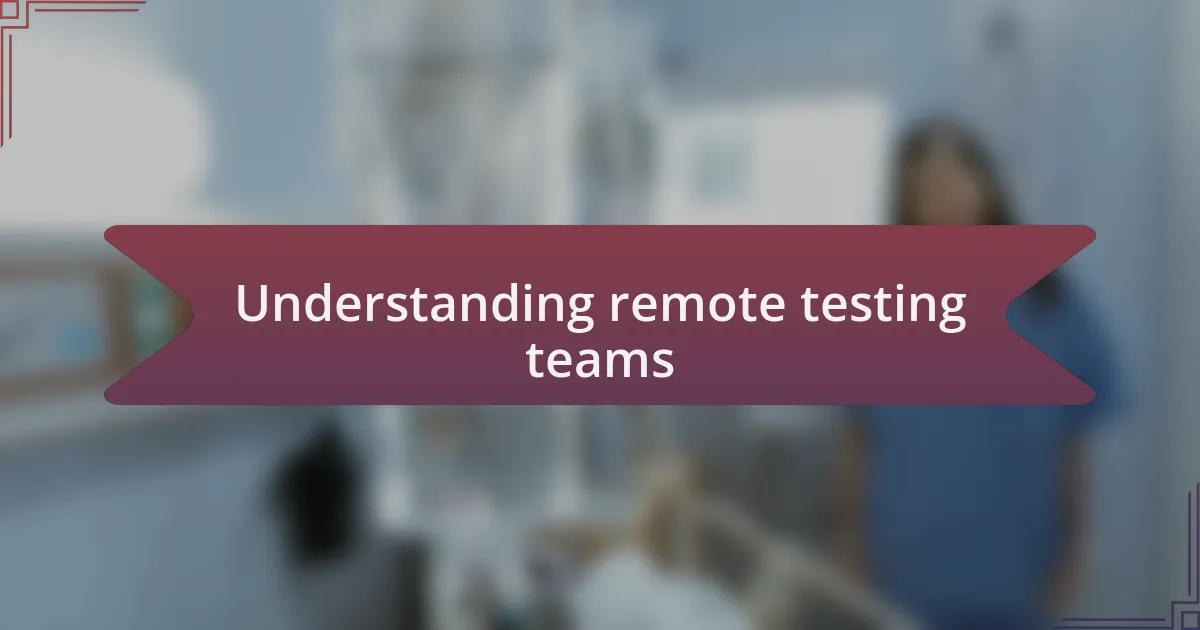
Understanding remote testing teams
Remote testing teams have become an integral part of the software development landscape. I remember when I first transitioned to managing a remote team; the sense of disconnect was palpable. How do you foster collaboration when your team is spread across different time zones and cultures? I learned that open communication is key, often utilizing video calls and collaborative tools to bring everyone together.
Each team member brings unique strengths, preferences, and backgrounds, which can be both a challenge and a huge advantage. In my experience, creating a culture of trust is essential. Trust nurtures innovation and empowers team members to speak up when they see issues or have ideas, ultimately enhancing the testing process. Have you considered how personal relationships impact team dynamics in a remote setting? I’ve found that investing time in building rapport pays off immeasurably in productivity and morale.
Performance metrics are critical when managing remote testing teams. However, it’s important to balance quantitative measures with a qualitative understanding of individual contributions and team spirit. I tend to ask, “Are we meeting our goals, but also, is everyone feeling valued?” A holistic approach not only drives results but also ensures team members remain engaged and motivated in their roles.
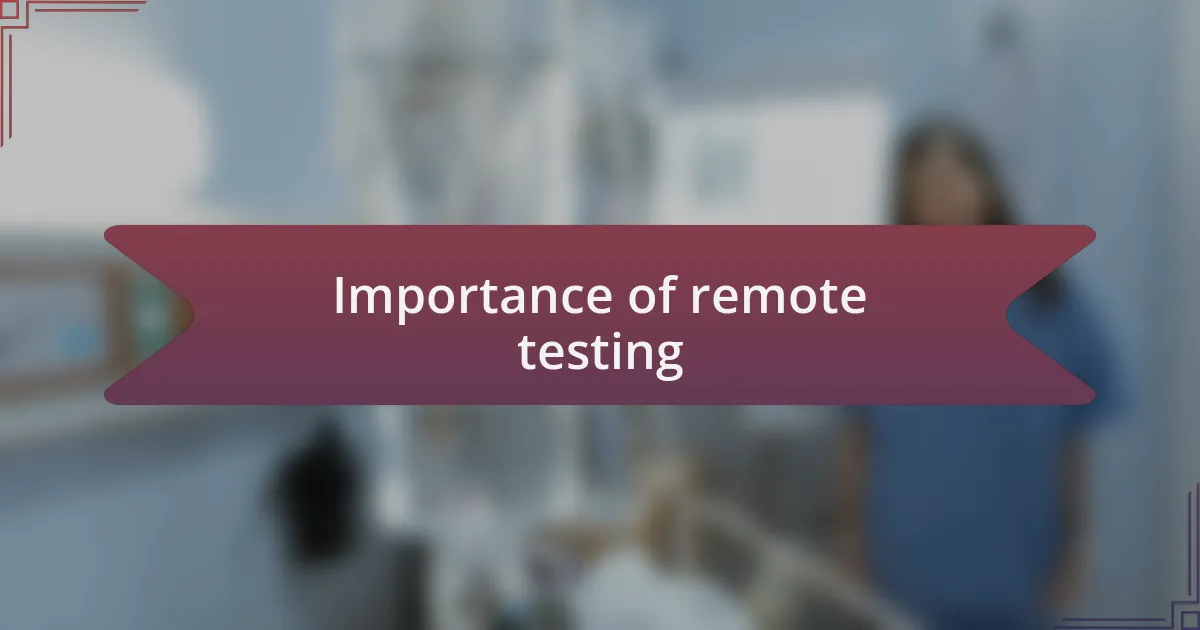
Importance of remote testing
Remote testing holds paramount importance in today’s fast-paced software development world. With teams often scattered across different geographical locations, remote testing allows us to tap into diverse skill sets from around the globe. I recall a project where we leveraged testers from various countries; their unique perspectives uncovered bugs we might have missed in a more homogenized group, significantly improving our product quality.
Furthermore, remote testing encourages flexibility and adaptability, which I’ve found to be critical in a dynamic industry. For instance, during a crunch period, I was able to bring in additional testers on short notice, accommodating their schedules without the constraints of a traditional office environment. This adaptability often leads to smoother processes and faster turnaround times, enhancing the overall efficiency of the development cycle.
In my experience, the ability to conduct testing from remote locations fosters a culture of continuous feedback. I remember implementing a daily stand-up via video call, where every team member shared insights. This not only kept everyone aligned but also created a supportive environment where voices from different time zones resonated. Isn’t it fascinating how technology bridges gaps and brings us closer, enabling effective collaboration no matter the distance?
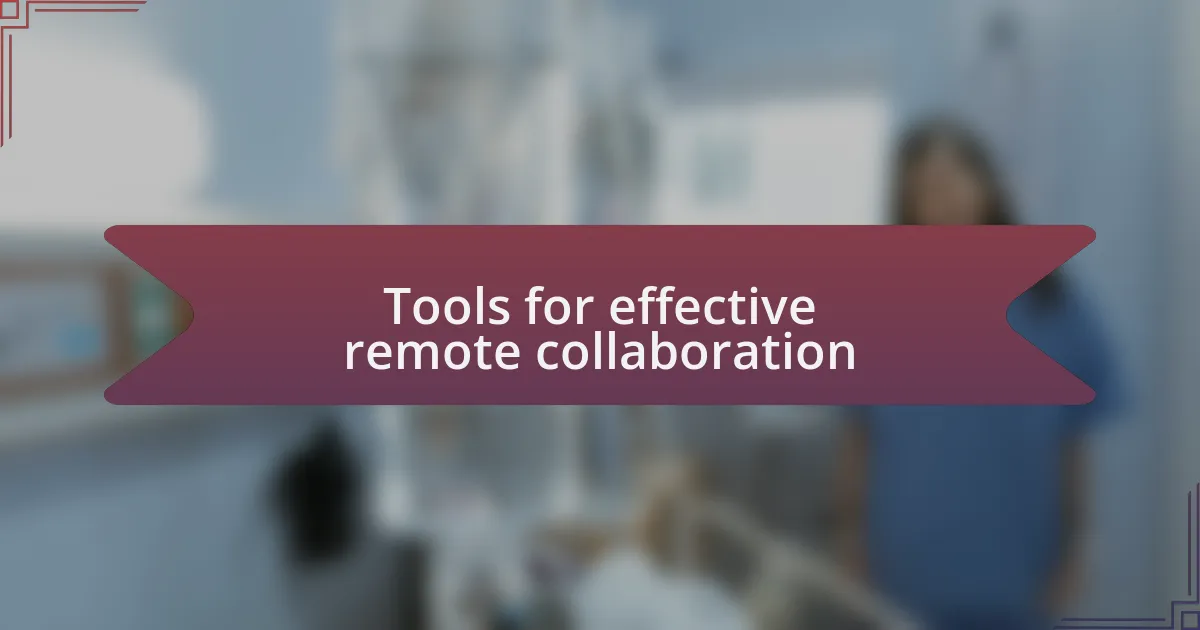
Tools for effective remote collaboration
When it comes to remote collaboration, I’ve discovered that choosing the right tools can make all the difference. For instance, I absolutely rely on platforms like Slack and Microsoft Teams for real-time communication. I’ll never forget how a simple direct message clarified a complex issue during a high-stakes testing phase, saving us hours of confusion. Have you ever experienced delays due to miscommunication? By utilizing these tools, my teams stay in sync, and we share updates effortlessly, ensuring everyone is on the same page.
In addition to communication tools, I find that a project management tool like Trello or Jira is invaluable for tracking progress. When I transitioned to remote work, implementing a clear task board not only organized our testing efforts but also fostered accountability. It’s rewarding to see tasks move from “In Progress” to “Done,” and the sense of accomplishment is palpable, even through a screen. It makes me wonder: how often do we overlook the power of visual organization in remote settings?
Video conferencing software, such as Zoom or Google Meet, has been a game changer for our daily stand-ups and brainstorming sessions. I remember the first time we used screen sharing to walk through a new feature together; it turned an abstract concept into something tangible. I could see everyone’s faces light up with understanding. Isn’t it incredible how a simple video call can replicate that in-person feel, fostering rapport and creativity among team members spread across different continents?

Best practices for managing teams
When managing remote testing teams, establishing clear expectations is pivotal. I remember a project where we faced confusion over deadlines, resulting from vague communication. Setting specific goals and timelines upfront helped eliminate guesswork, ensuring that every team member knew exactly what was expected. Have you ever noticed how clarity in expectations can heighten team motivation and productivity?
Regular check-ins are another essential practice I’ve found invaluable. Initially, I was hesitant to schedule frequent one-on-ones, thinking it might infringe on individual work time. But I quickly learned that these meetings foster connection and provide a sense of support. I once had a team member express gratitude for a quick catch-up, revealing that it enhanced their confidence in approaching challenges. How often do we underestimate the power of simple human connection in a remote landscape?
Celebrating wins, no matter how small, can significantly boost team morale. I distinctly recall a time when we completed a major testing milestone, and I organized a virtual celebration, complete with fun quizzes and shout-outs. The joy and camaraderie we shared reminded me that, while we may be miles apart, our collective achievements deserve acknowledgment. Have you found that recognizing contributions can strengthen bonds within your team?

Communication strategies for remote teams
Effective communication strategies are crucial for remote testing teams. One approach I’ve embraced is utilizing diverse communication tools tailored to different needs. For instance, I often leverage instant messaging for quick queries and video calls for deeper discussions. This mix keeps interactions dynamic and ensures that team members feel heard and valued. Have you ever noticed how the right tool can elevate the clarity of your message?
Another strategy I advocate is establishing a common communication protocol. In one project, we agreed on specific channels for different topics, which minimized confusion. For example, we used emails for formal updates and a designated chat room for urgent issues. This structure not only streamlined our communication but also provided a safety net, making it easier for everyone to find information when needed. Isn’t it interesting how a bit of organization can lead to more effective collaboration?
Lastly, fostering an open feedback culture is essential for team cohesion. I recall a time when we implemented a bi-weekly feedback session, allowing team members to share their thoughts on communication effectiveness. The insights we gained led to actionable improvements, reinforcing our collective commitment to transparency. Have you ever experienced how honest feedback can transform a team’s dynamics?
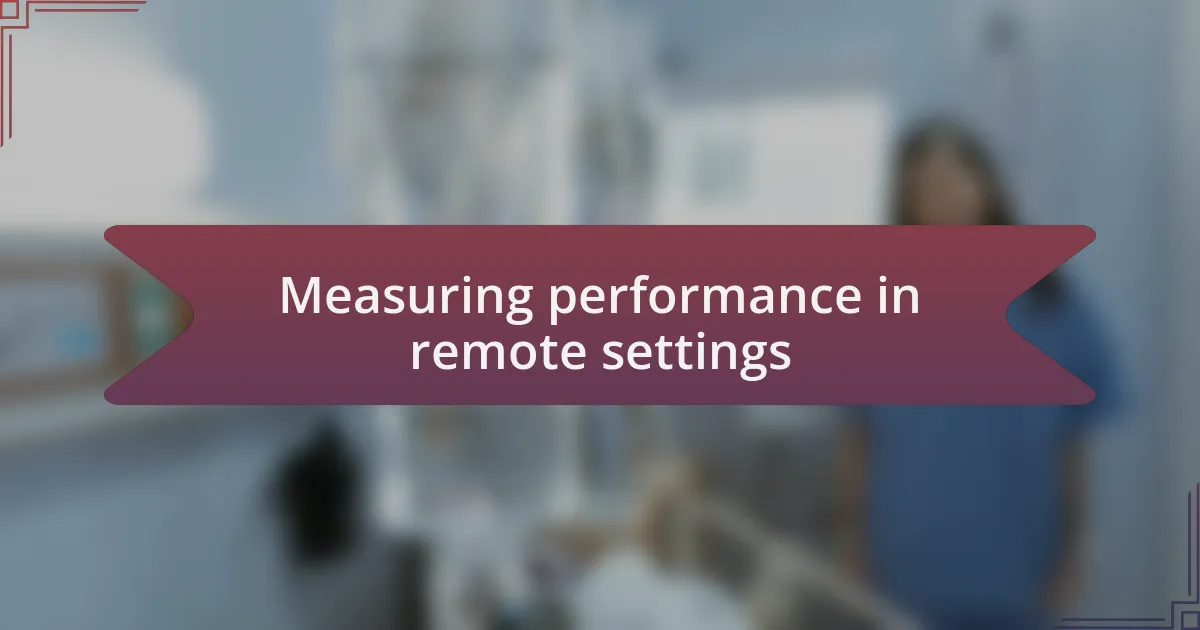
Measuring performance in remote settings
Measuring performance in remote settings can sometimes feel like navigating uncharted waters. In my experience, setting clear, measurable objectives is a game-changer. For instance, I introduced key performance indicators (KPIs) that align with project goals, allowing our remote teams to track their individual contributions clearly. This approach not only holds team members accountable but also fosters a sense of ownership over their work. Have you found that targets help guide your productivity?
One effective tactic I’ve employed is the use of periodic check-ins that go beyond simple status updates. I remember organizing weekly progress meetings where team members would present their accomplishments and outline challenges. This practice not only provides a platform for recognition but also fosters a collaborative spirit, as we brainstormed solutions together. How often do you celebrate small wins while tackling complex projects?
Additionally, leveraging digital tools to monitor performance metrics has proven invaluable. I use project management software that offers real-time analytics, allowing us to visualize progress and spot potential roadblocks early. It transformed our remote working landscape, enabling proactive adjustments to our workflow. Reflecting on your experience, don’t you agree that data-driven insights can provide clarity and drive continuous improvement?
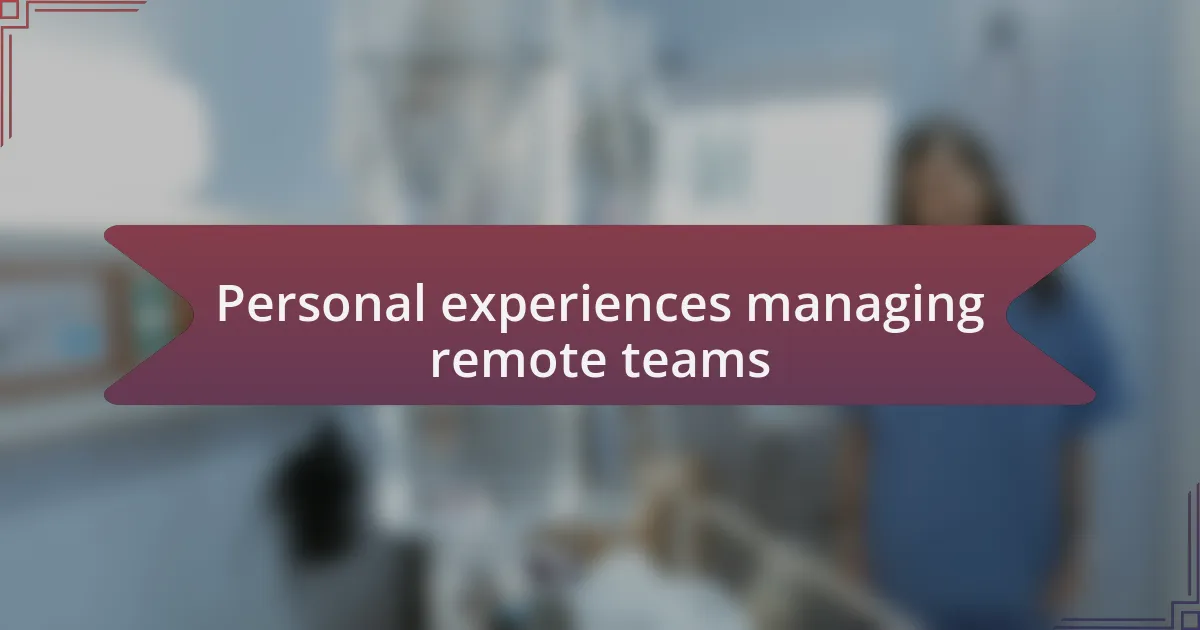
Personal experiences managing remote teams
Once, while managing a remote testing team, I faced a situation where communication barriers led to misunderstandings. One team member felt left out during a critical bug-fixing session, which prompted me to rethink our interaction methods. I initiated video calls to foster real-time dialogue, resulting in a more cohesive team atmosphere. Have you ever noticed how face-to-face interactions can bridge gaps in remote work?
In another instance, I learned the importance of celebrating milestones, however small they may be. During a particularly challenging project, I organized a virtual lunch to recognize our team’s hard work. Sharing personal stories and laughs over lunch not only uplifted spirits but also strengthened our bond, making the challenges feel a little lighter. Do you think moments like these can transform workplace culture, even from a distance?
Ultimately, I’ve come to appreciate the value of flexibility in managing remote teams. Each member brings unique circumstances, and understanding their individual needs has been pivotal. One time, I adjusted deadlines for a team member juggling family responsibilities, which led not only to improved output from them but also to a boosted morale that resonated across the team. Doesn’t it make a difference when empathy shapes our workplace relationships?